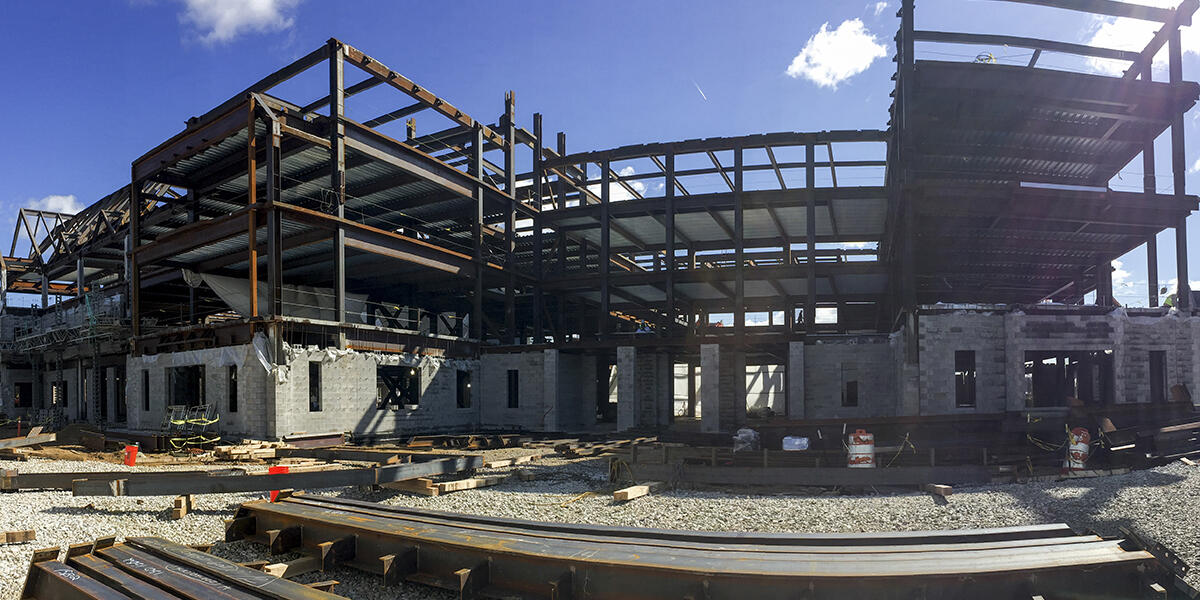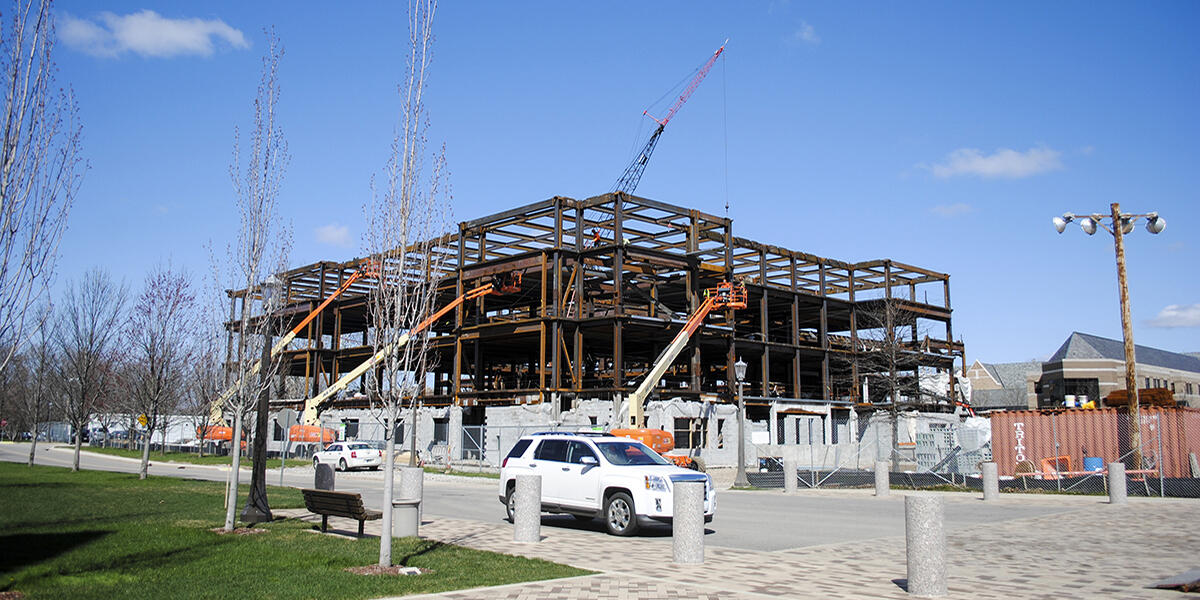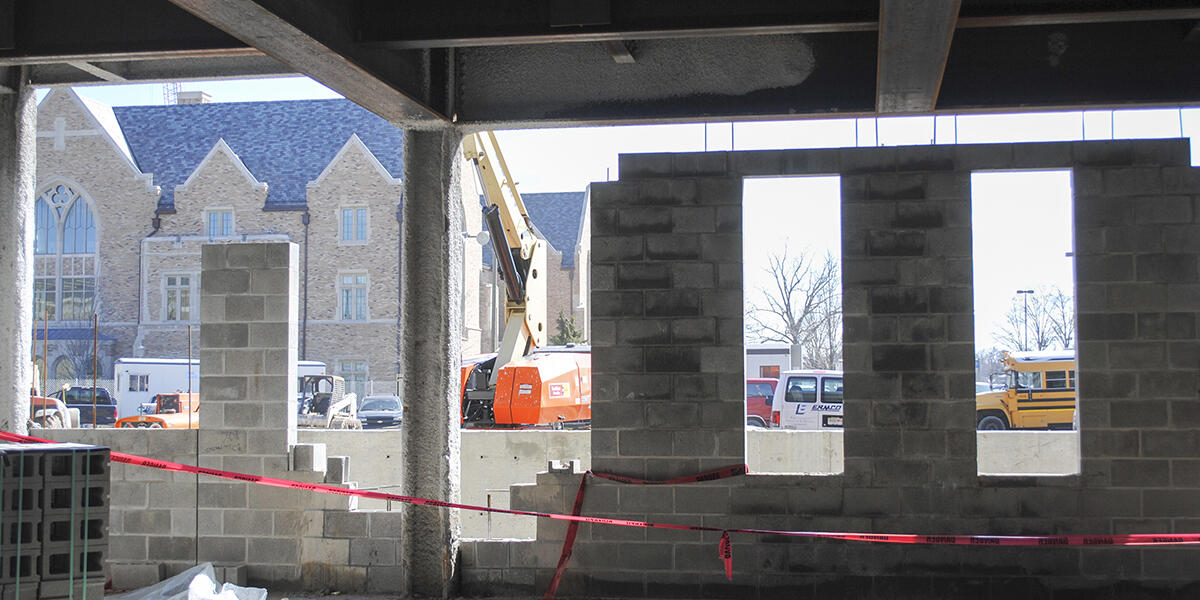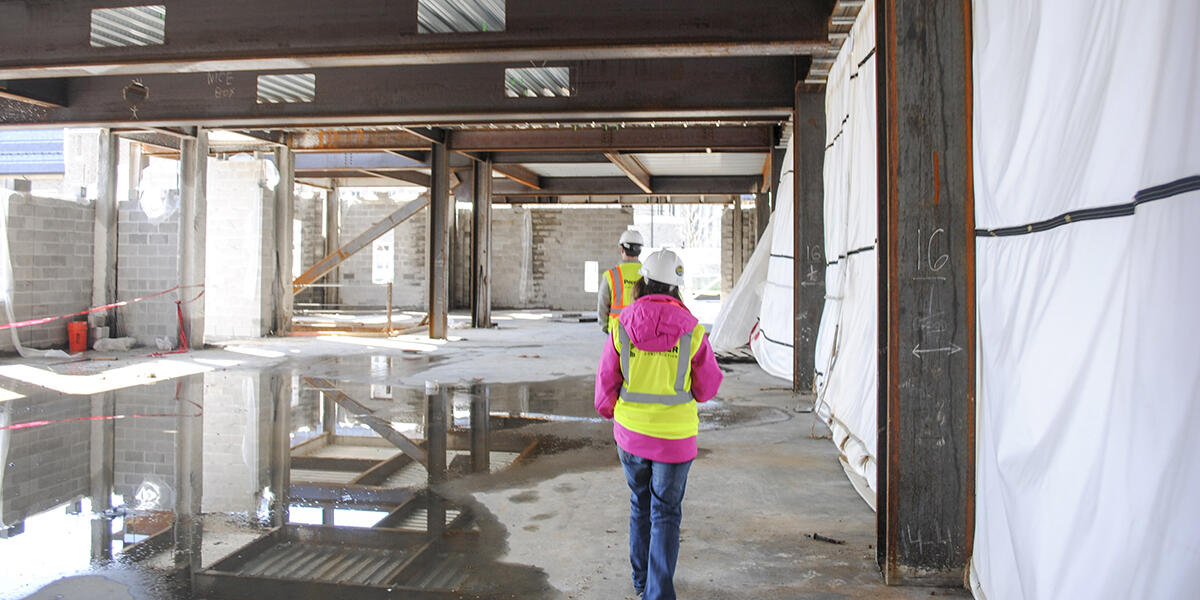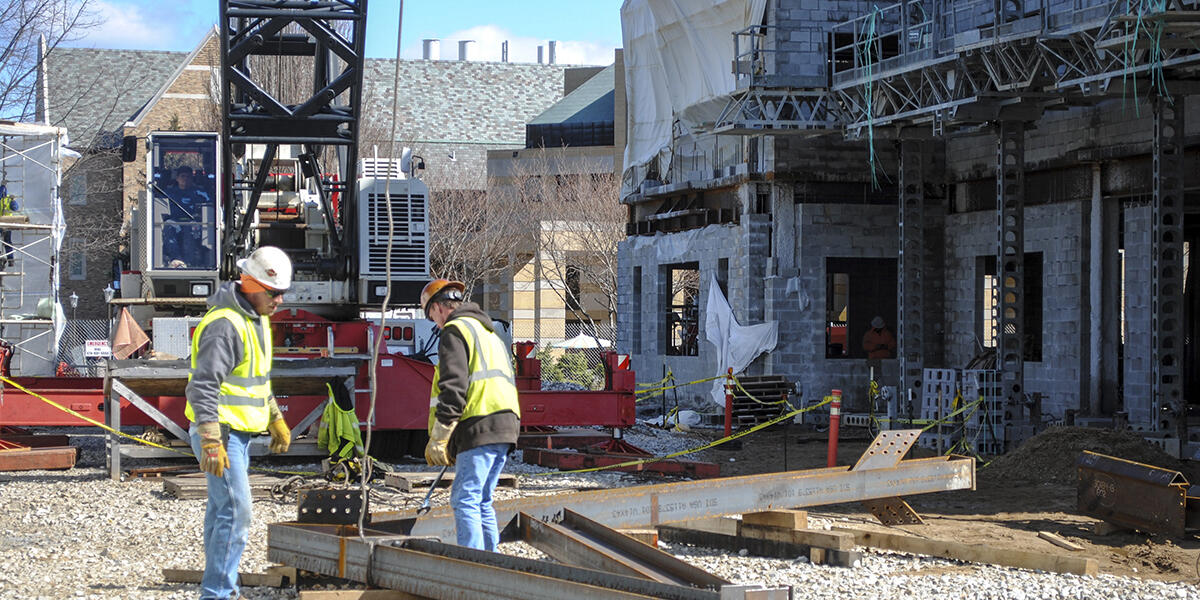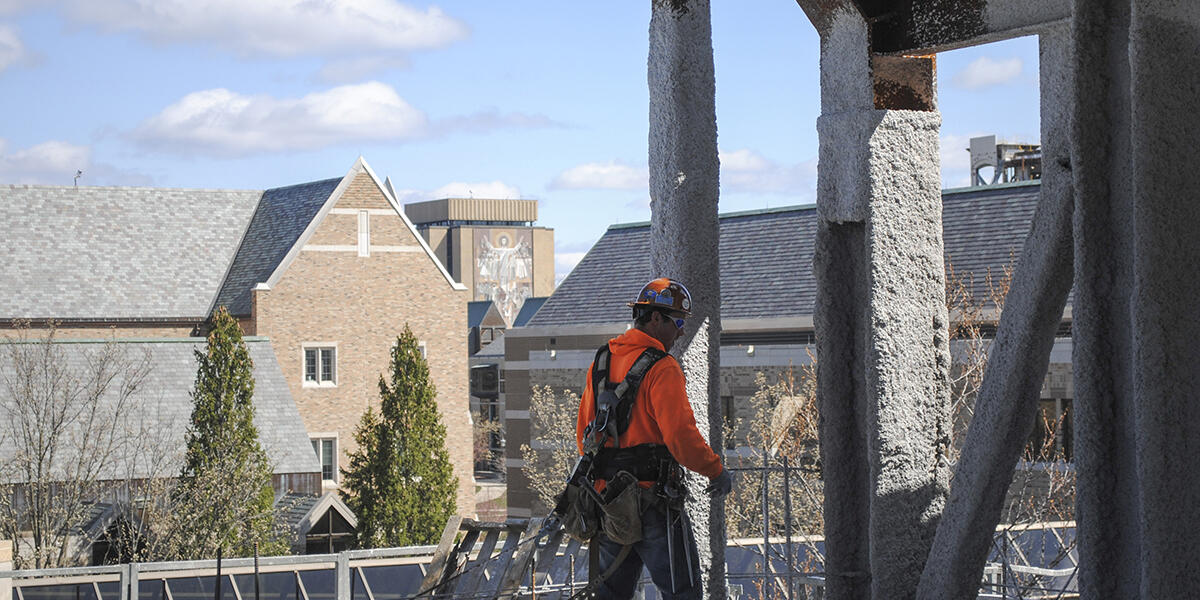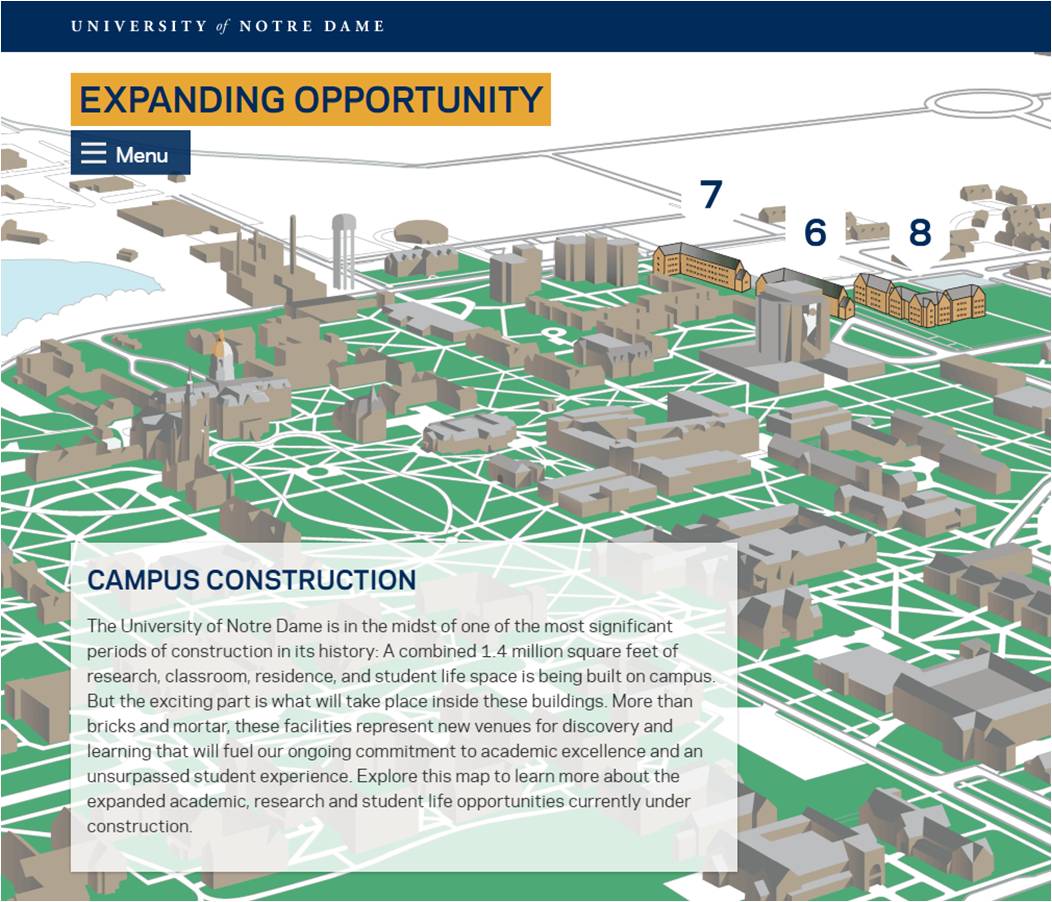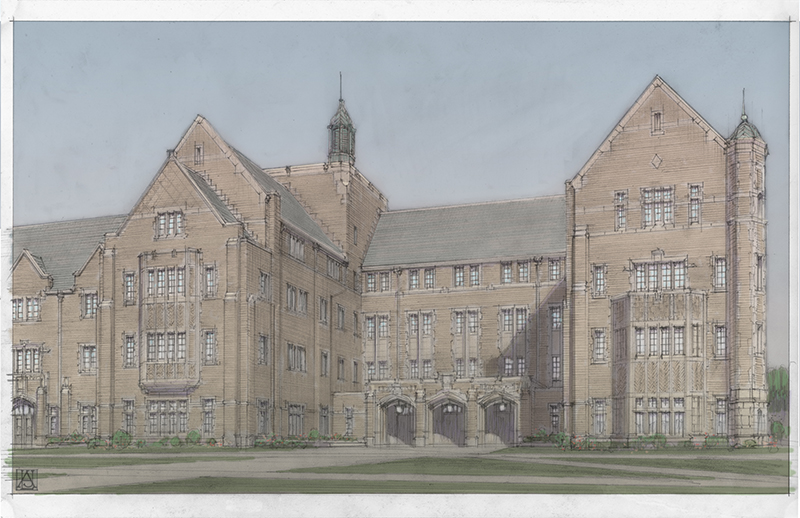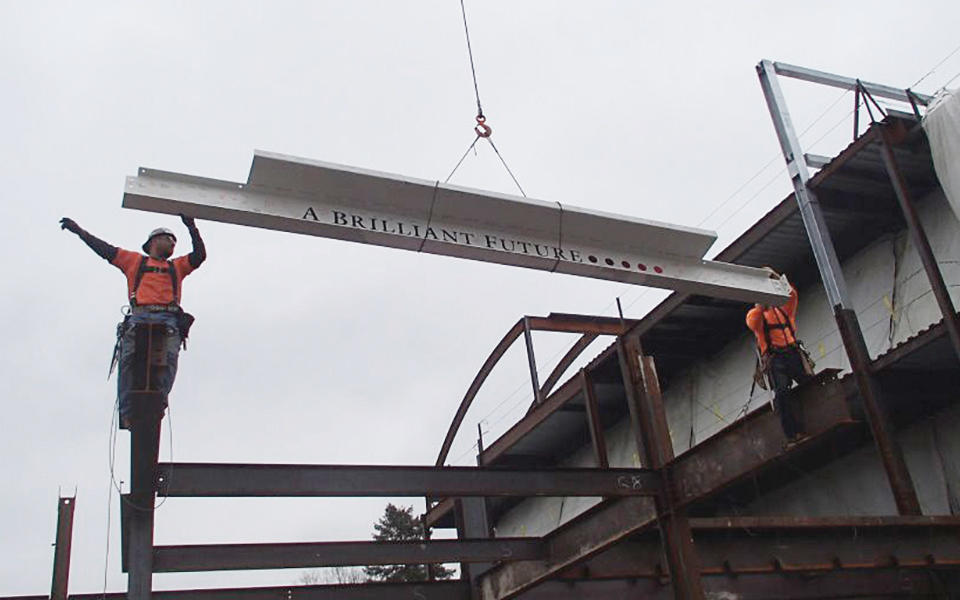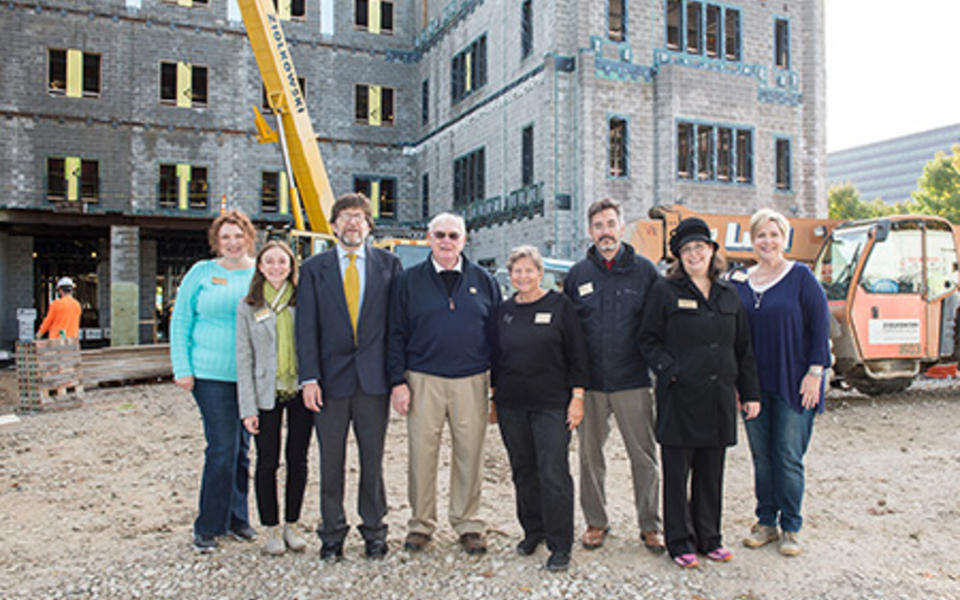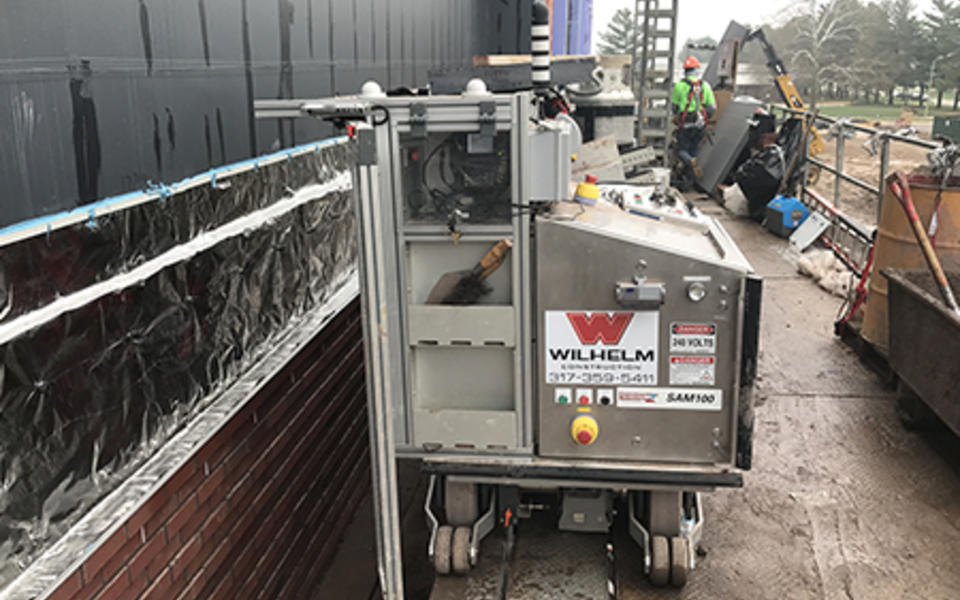Notre Dame Jenkins and Nanovic HallsProjects, Education
The creation of Notre Dame's Jenkins and Nanovic Halls
Much has changed since I was in college. When I was in school, I basically went to one building – the college of engineering. Today, we're constructing buildings designed to hold two or more schools to encourage inter-mixing of disciplines. Universities are also connected globally, particularly in this digital age. The mixing of schools and cultures provides a more dynamic learning experience for students and fosters a different, more holistic view of the world. Today's graduates are better prepared to deal with real-world issues because their environments are more reflective of how the world really works.
"It's important that we continue to invest in our facilities so those who work and learn at the university are not hindered by the physical environment. The vision of the university leadership to make Notre Dame a pre-eminent research institution, in addition to offering an unsurpassed undergraduate education informed by our Catholic character, has shaped our master plan. We have great support of this vision, which is enabling us to really change the campus landscape with all of the current construction efforts."
Michael Daly, Senior Project Manager/Architect for University of Notre Dame
The campus of the University of Notre Dame is undergoing a lot of change right now. With six new construction projects in progress at the same time, the university is adding over one-million square feet: two undergraduate dorms, Jenkins and Nanovic Halls, Walsh Family Hall of Architecture, McCourtney Hall research facility and the Campus Crossroads project surrounding Notre Dame Stadium. This, in addition to ongoing maintenance and renovations and the backfill work that will follow.
https://www.nd.edu/features/expanding-opportunity/
Pepper is constructing the Jenkins and Nanovic Halls. As I've worked with the team, I've had the opportunity to learn a little bit more about the buildings beyond the concrete and steel, to the university's vision for how they will be used.
The last to be constructed on the University of Notre Dame's DeBartolo Quad, the Jenkins and Nanovic Halls will be among the first buildings to greet visitors when entering the campus. The exteriors will blend with the surrounding collegiate gothic architecture, featuring Notre Dame brick with cast stone, gabled roofs, towers and turrets. With limited clearance on all sides, our construction team is carefully working around existing walkways and trees to preserve as much of the park-like setting as possible. When completed, the new buildings will harmoniously fit into a campus that was originally established more nearly 175 years ago.
First new school in nearly a century
The Campus Crossroads Project, which is well underway, has received a lot of attention because of its size and connection to Notre Dame Stadium. No doubt, it sets a new direction for how the stadium will impact all students. But there is something extraordinarily special about the Jenkins and Nanovic Halls to be named after University President Rev. John I. Jenkins, CSC, and benefactors Robert S. and Elizabeth Nanovic, and to be given such a prominent presence – the last space on the DeBartolo Quad.
In 2014, Notre Dame announced the creation of a new school - the Donald R. Keough School of Global Affairs. It's the first school Notre Dame has established in nearly 100 years. When completed, Jenkins Hall will house the Keough School of Global Affairs, set to open in 2017, composed of the Keough-Naughton Institute for Irish Studies, the Liu Institute for Asia and Asian Studies, the Center for Civil and Human Rights, the Kellogg Institute for International Studies, the Kroc Institute for International Peace Studies and the Notre Dame Initiative for Global Development. Jenkins Hall will co-join Nanovic Hall, which will house the Nanovic Institute for European Studies and the departments of Economics, Political Science and Sociology.
Jenkins and Nanovic Halls represent the bigger picture of what the University of Notre Dame is about – teaching, research, service and faith – and they further the goal of providing a global education. I was surprised to learn that half of Notre Dame students engage in study abroad programs.
The creation of the Keough School of Global Affairs will bring the world closer to Notre Dame and the university closer to the world. It will open doors of opportunity to have a transformational impact on all nations – addressing issues like poverty, war, healthcare and human rights. So of course Notre Dame leaders chose a very visible piece of land to feature the catalyst for their mission.
Building a vessel to prepare other vessels
Jenkins and Nanovic Halls are about what will happen inside, and Notre Dame designed two central spaces to facilitate the integral human development.
01. The Mediation Room was the concept of Marilyn Keough Dean and Professor of History Scott Appleby, and it was introduced later in the design process. It is designed as a miniature version of the United Nations, with observation and simultaneous translation rooms. The Mediation Room physically brings two factions together so they can share their ideas and find middle ground.
02. The Forum is open and flexible space situated above the Mediation Room in the center of Nanovic Hall. It is designed for both informal gatherings and large, formal presentations.
Notre Dame is preparing vessels for leadership, and this is the real story of the Jenkins and Nanovic Halls. The buildings are just vessels to house the extraordinary research, ideas and relationships that will take place within.
A role for religion
Notre Dame is not the first to establish a school of global affairs. It joins other prestigious universities, like Stanford, Princeton and Harvard, but what sets Notre Dame apart is its ability to develop the program in response to how the world looks today, post 9/11.
The university is recognized for remaining closely rooted in its Catholic faith, and its architecture has not wavered from this commitment. All residence halls and most other buildings have a Catholic chapel, as well as multi-religious space. We built a chapel in the Stinson Remick Hall, and they will be included in Jenkins and Nanovic Halls as well. With their faith so strongly woven into everything they do, Notre Dame also intends to incorporate religion's influence into the context of today's societal issues, which is a dimension that is often overlooked in the field.
Two needs and one very confined space
Originally, the vision was for Nanovic Hall to bring together under one roof the sociology, political science and economics departments, whose faculty and students have been scattered across campus for more than a decade. The goal is to increase collaboration between students and faculty and among departments.
Of course, that was before the school of global affairs was formed. That addition presented a challenge for HBRA Architects. Notre Dame's vision was to bring together similar yet distinct academic entities, each with its own building, donor and name.
"One of the challenges for this project was to design two distinct buildings with specific and particular programs that would ultimately coalesce into a refined whole for both the Social Sciences and the Keough School of Global Affairs.”
Gary Ainge, Principal Architect, HBRA Architects
Gary has done work on other campuses with similar architecture. "The collegiate, gothic style allows for both asymmetrical, yet balanced conditions along with localized symmetries. Features such as towers and turret enrich the overall vocabulary."
The resulting building configuration is a pair of conjoined buildings that together comprise an integrated ensemble with the forum space at its heart. Each has its individual signature, and the shape sets the tone and reinforces the separate institutes and departments, while also suggesting an interconnection exists between the programs, reflective of the increasing interconnectivity that exists in the world. For the design of the exterior façades, HBRA Architects looked to the surrounding architecture, using Alumni Hall, Notre Dame Law School, Dillon Hall and South Dining Hall as points of reference.

HBRA was also challenged with defining the space for the school of global affairs before the school existed. To facilitate the design development, they used basic information for the initial programming. They graphically represented the institutes in terms of blocks of space, from large gathering spaces down to small blocks for individual offices. It revealed what the needs really were, and from there they continued to evolve and test throughout the design process.
Developing community-minded leaders
The first time I worked on Notre Dame's campus was when we built Stinson Remick Hall. I was impressed with Notre Dame's picturesque setting - St. Mary's and St. Joseph's lakes, parks and nature preserve. While many schools promote off-campus living, the university has maintained its residential structure, and there exists a strong sense of community. They have purposely kept undergraduate enrollment around 8400 students and have encouraged a strong sense of family. This has created a high level of collegiality, which translates to high occupancy in the residence halls and an impressive 80 percent of students living on campus.
As existing programs are configured into new space, and existing space is reconfigured and modernized, the university has remained true to who they are. The master plan carefully balances the location and size of facilities with the green space that maintains the history, sense of community and sustainability that is important to the future leaders they are helping to shape.
Walking the talk
The goal of Notre Dame's Keough School is to "forge effective partnerships and solutions across disciplines and sectors." For us, the team designing and constructing Jenkins and Nanovic Halls, Notre Dame models the principals it teaches its students. We've been working on this project for three years now – half of that time was spent in preconstruction. And it's not just our project; it's the approach Notre Dame takes on all of their projects.
"You don't want to get into construction to learn late that you can't afford the design – you can't afford to do it that way. We work closely with our design team and builder on all of our projects so we know exactly where we stand throughout the process."
Michael Daly, Senior Project Manager/Architect for University of Notre Dame
The university brings the contractor together with the selected design firm, early-on, to set the budget before the design and then help test feasibility with the cost and schedule as the design develops. Many owners we work with delay the decision to hire us until later in the design process, but an early decision prevents costly design changes and escalation. It's unusual for an owner to consider the cost of delayed team decisions in its evaluation – and really smart.
About the Author


